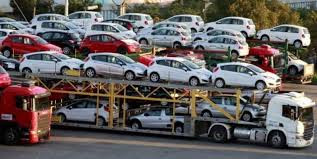
The government of Zimbabwe banned the importation of used cars older than 10 years and introduced the pre-shipment inspection regulations from June 1, 2022.
They simultaneously appointed three companies namely The Standards Association of Zimbabwe, Cotecna Inspection of Switzerland and EAA Company Limited of Japan to conduct consignment-based conformity assessment inspections from the countries of source.
In accordance with the Ministry of Industry and Commerce the consignment-based conformity assessment (CBCA) programme is designed to ensure that imports for used cars meet the quality and safety regulations, thereby protecting Zimbabwean consumers, local industry from unfair competition as well as protecting the environment.
In this article l am going to provide details about the realities of this programme, inform you how other neighbouring countries are handling the same matter and share some facts around it to enable you our esteemed readers the opportunity to make your assessment if indeed the regulations are serving the public and the government strategy fairly.
The fees for the inspection certificate for each used vehicle imported into the country is pegged at US$140 which is paid together with the cost, insurance and freight (CIF) amount.
The assessment of conformity of used vehicles includes elementary verification such as documentation review to determine if a vehicle is below 10 years, to confirm if the vehicle is right hand drive, to determine the vehicle structural integrity, to verify radiation emissions, lighting, water damage and corrosion identification.
The objectives by government of seeking to protect its citizens from buying inferior quality used vehicles at a higher cost in respect of its condition is 100% noble and l couldn’t agree more with the authorities.
I further agree with the theory and conversation of protecting the local industry from unfair competition to assembling plants such as Willovale Mazda Motors Industries (WMMI), Quest Motors Corporation, Deven Engineering and AVM Africa for buses.
The Zimbabwean citizens and the local industry operate within an environment, which must be conducive and seeking to protect the environment is a key foundation of a progressive country against the prevailing threat by climate change caused by greenhouse emissions.
The strategy is in line with the United Nations’ Paris Agreement signed in April 2016 which Zimbabwe is a signatory.
I am, however, interested to share some thoughts around this important programme.
Firstly, l am concerned about the list of the assessment criteria which includes elementary verification such as documentation review to determine if a vehicle is below 10 years, to confirm if the vehicle is right hand drive, to determine the vehicle structural integrity, to verify radiation emissions, lighting, water damage and corrosion.
My expectations were that the assessments should have categorically included accident damaged cars and those in very bad condition because they do not conform with the objectives of protecting citizens from buying junk cars and avoid making the country a junk yard destination.
The car grades that l think should not be allowed into the country include the below;
- 2 – Usually means terrible condition cars with rust and corrosion with potential to have all kinds of faults.
- 1 – Defines cars which got flooded with water before.
- RA – Cars which have been fixed after an ordinary car crash.
- R – Defines vehicles from a serious previous car crash. This car may be repaired but probably need more fixing. Note that this car may be Immovable.
- *** (99, x, etc.) – This vehicle has been in an accident or has some serious engine trouble and was not fixed.
Secondly l am concerned that our neighbouring countries including Botswana, Malawi, Mozambique and Zambia all do not have the same age limit rules.
This situation makes the Zimbabwe government strategy very weak because the efforts towards creating a clean environment should be done collectively in order to achieve this objective.
This situation speaks volumes about the lack of regional integration of policies and harmonization of laws.
It is my considered view that with a consensus approach member states under Sadc should consider allowing the Euro 4 petrol engine cars, which were registered from 2006 and the Euro 6 for diesel engines for cars registered from September 2015, which are ideal for low emission zones.
If my logic is correct this could be a winner for Zimbabwe and the climate change agenda.
Right now l feel like Zimbabwe is in a similar situation to that of a non-smoker seating in a bar where everyone is smoking.
Even with Zimbabwe’s effort we are still receiving the pollutants from our neighboring countries. According to the used cars export data over the last six years Zimbabwe is importing on average of 7 000 units annually while Zambia is importing 11 000 units and Botswana is doing 9 200 units.
On the other hand, Mozambique is doing 16 000 units while Uganda is doing 28 000 units annually.
Thirdly, l have reservations about the government strategy of trying to “baby seat” the local assembly plants because this has not been working for a very long time.
For starters reducing the age limit of used cars cannot automatically shift the same market to new vehicles because of the big gap on pricing.
I would like to believe that the strategy that works is for the government to ban the importation of Completely Built Up (CBU) units being imported from South Africa, Germany and South Korea including brand new Mercedes Benz, Toyota, Nissan, Ford, Mazda, Isuzu, Hyndai, KIA among others.
If this decision is made to redirect assembling to be done from these existing plants in the country the economic benefits to the downstream industries is tremendous and employment creation will increase within this industry.
The ban on importing used cars older than 10 years had a significant financial implication to the Zimbabwean citizens in terms of how much they now fork out on the FOB prices.
The difference in the FOB prices ranges between US$900 and US$3,500 depending with the vehicle model which gives an overall average of US$1,500 increase per unit.
In view of this financial burden on cost of the cars plus the inspection fee of US$140 per car there is perhaps need to revisit the policy framework.
One particular area is to avoid a complete ban like what Tanzania is doing.
In Tanzania one can import a used car of any age although the taxes are higher for those that are much older. Uganda has age limit restrictions in which private cars should not be older than 15 years but will pay environmental levy if one chose to import that age bracket. Private cars not older than 10 years have a cheaper tax bracket.
Any truck above two tones can be imported into Uganda while vans are restricted to those older than 14 years.
A complete ban may also increase forgery of documentation and increase the appetite for corruption at the boarders.
In the same spirit of making sure that the citizens import cars within a minimum quality and also that they meet certain safety regulations, but this cannot be sustained if our country does not introduce an annual or bi-annual mandatory local vehicle inspections for all the categories of vehicles.
The vehicle inspections l am talking about are similar to the SHAKEN or JCI in Japan or the Ministry of Transport (MOT) in UK and the DEKRA inspections in South Africa.
It really defeats the purpose of giving strict conditions when importing the cars but when they are here there is no strong enforcement of servicing and maintenance of the same vehicles.
While l do understand that the Vehicle Inspection Department (VID) does some spot checks along the roads but honestly speaking that is not the way a country can enforce maintenance of cars to its citizens.
The VID road inspections should be done as enforcement of the inspections to check those that have the valid inspection certificates and penalise those without and not to do spot checks and do the testing on the roadside.
Lastly, l would like to recommend that the Standards Association of Zimbabwe considers to include the Used Car Dealers Association leadership into the technical committee that determines the criteria of the consignment-based conformity assessment (CBCA) because they are directly involved in the business and understand the challenges they face on importing junk cars and the effect it has with customers.
There is high risk of forgeries on the documentation at the port which defeats the whole policy thrust.
I tried to get information on the number of used cars that were not allowed into the country as a result of this policy but l did not get any response from the Standards Association of Zimbabwe.
Such information should be published from the association website for public consumption.
I, therefore, invite your comments and feedback regarding today’s topic and you can get in touch with me using the below contact details and l will gladly respond.
*Stanley Makombe has 24 years’ experience in this industry, provides online car sales training and business coaching to entrepreneurs struggling to run profitably. He is writing in his own capacity and can be contacted on +254 743 900 590, email: stanley@stanleymakombe.com, www.stanleymakombe.com










